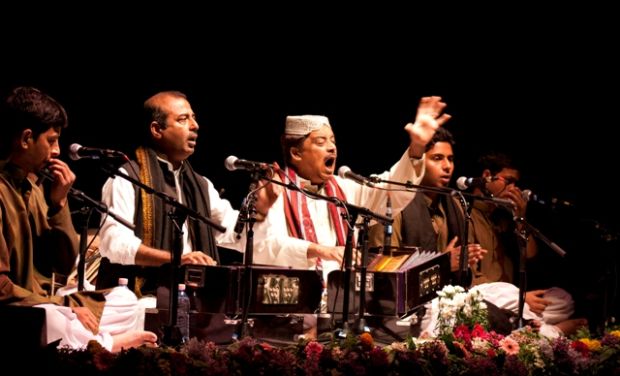About the Australian Qawwal party
Australia’s Leading Qawwal is a devotional music group established in 2020 in Sydney. It’s a group of talented musicians and singers from South Asia who have a common passion for devotional music and specialise in the sacred form of authentic qawwali. The group has successfully organised some concerts recently and has got accolades for their professional singing and stage presence. Qawwali is traditional Devotional music sung in shrines of South Asia.
” Qawwali and the Art of Devotional Singing ” . Qawwali is a musical form associated with the Chishti Sufi Order’s sama’, or spiritual concert. In its religious context, it is used to induce a trance-like state in order to make members of the order more aware of their relationship with God. Amir Khusraw (1244-1325), known as the “Nightingale of India” for his contributions to South Asian music and literature, is usually credited with the art. His prolific output is attributed to his intense spiritual love for his master, the great Chishti master Nizam ad-Din Awliya.

Qawwali is structurally linked to Khusraw, who not only created the style, but also the elements that allowed it to exist. It is usually performed in a call-and-response style with a lead singer and chorus. These singers are accompanied by musicians who play percussion instruments such as the dholak or tabla, as well as a sitar, a long-necked stringed instrument. Khusraw is credited with the invention of the tabla and the sitar.
Hand-clapping, in addition to the formal instrumentation, serves to emphasise the rhythmic structure and engage the audience. The harmonium has replaced the sitar in modern times. Only men can technically perform qawwali songs, with female performers singing sufiana kalam, or Sufi words. The most obvious distinction between the two is that a female.
Structurally, qawwali is intimately linked to Khusraw, who not only birthed the style, but also created the elements to make it possible. It is usually performed with a lead singer and chorus, playing in a call-and-response style. These singers are supported by musicians playing percussion instruments, the dholak or tabla, and a sitar, a long-necked stringed instrument.

Both the creation of the tabla and the sitar are connected to Khusraw. In addition to the formal instrumentation, hand-clapping serves to emphasize the rhythmic structure and engage the audience. In the modern period, the harmonium is used instead of the sitar. Technically, only men can perform qawwali songs, with female performers singing sufiana kalam , Sufi words.
The most noticeable distinction between the two is that a female tends to sing solo, even if her troupe is as large as a male’s troupe. Because the gender differences in performance are so subtle, the term qawwali is commonly used to describe any performance of this type.
Our Artist
Jayden Sain
Born white, brown by blood. Ever since birth I’ve been making noise which has lead me to having an intense passion for Sufi music.
Harsh
Born and raised in India. Moved to Sydney 4 years back. In studies completed Bachelor’s of Information Technology. Raised up listening Qawaali, folk songs and Interested in Bollywood music. Have been a Guitarist since 2017.
